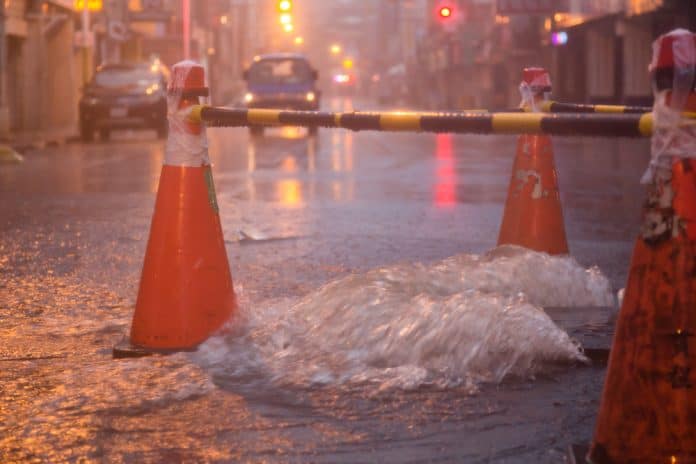
Families and individuals affected by typhoon Rolly can expect emergency housing assistance from the National Housing Authority (NHA), as the Department of Human Settlements and Urban Development (DHSUD) vowed to extend help, the Business Mirror reported.
The government allotted P1 billion for NHA’s Emergency Housing Assistance Program (EHAP) this year. The agency, however, has not confirmed yet the remaining amount available for the typhoon victims.
Emergency Housing Assistance
Coordinating with local government units (LGUs), the NHA is working towards determining the extent of the damage and deciding the appropriate type of assistance to provide to the public. The agency vowed to request additional funding in case funds are not enough.
Depending on the damage sustained on homes, beneficiaries can get P5,000 up to P30,000 under EHAP.
Catanduanes, one of the badly hit areas by the typhoon, has about 10,000 to 13,000 families affected, their homes destroyed, according to Governor Joseph Cua.
In another Business Mirror report, Camarines Sur Rep. Luis Raymund Villafuerte appealed to the NHA for speedy assistance for the 80,000 families affected in their province, “reeling from the triple whammy of super typhoons Rolly and Quinta and the lingering coronavirus pandemic.”
Meanwhile, in Albay, big boulders buried about 300 homes, according to this Manila Bulletin report.
Financial Assistance, Relocation Sites
According to DHSUD Secretary Eduardo del Rosario, Pag-IBIG will open satellite offices in affected areas to accommodate members who would want to apply for calamity loan assistance.
The agency’s financial program is available for members who have been actively contributing, with at least 24 monthly membership savings and sufficient proof of income. Qualified members can borrow up to 80 percent of their total Pag-IBIG Regular Savings, which includes their monthly contributions, employers’, and accumulated dividends earned.
Individuals can pay the loan within 24 months, with the initial payment due in the third month after releasing the loan.
Aside from financial assistance, DHSUD’s long-term initiative involves building relocation sites. They plan to work with LGUs for the projects.
The Department of Public Works and Highways (DPWH), for its part, said that clearing operations on certain areas are underway, according to Manila Bulletin. This includes the Polangui, Balangibang, and Sipocot sections of Daang Maharlika and Goa-Tinambac Road in Camarines Sur.
Due to landslides, flooding, and fallen trees and eclectic posts, more than 10 roads have been impassable in Region 5.
Permanent Evacuation Centers Pushed
In the wake of typhoons Quinta and Rolly, lawmakers reiterate calls for the passing of the evacuation centers bill. In a GMA News Online report, Bayan Muna party-list Representative Carlos Zarate, the author of the pending law, said that those recently affected by natural disasters struggle to find safe shelters since the normal evacuation centers were used as quarantine facilities for COVID-19 patients.
Now is the time to build disaster-resilient evacuation centers, he said.
Filed after a 6.6 magnitude earthquake hit the Mindanao region last year, House Bill No. 5259 aims to construct evacuation centers large enough to serve two to three neighboring barangays, as mentioned in this Philippine News Agency (PNA) report. The site of the shelter must be in between barangays, easily accessible for evacuees during calamities.
Additionally, the centers must be able to withstand wind speed of at least 300 kilometers per hour and moderate seismic activity of at least magnitude 8.
Under the pending law, essential amenities and equipment must be present in such evacuation sites. This includes cubicles that can accommodate at least five families, restrooms, centralized kitchen, laundry areas, a clinic, a generator, and rainwater harvesting system. There should be natural ventilation and sufficient water supply, as well as a stockroom that can hold relief goods.
Meanwhile, in the Senate, Bill No. 747 seeks to build structurally sound evacuation centers, especially in areas prone to calamities.
The author of the bill, Senator Sherwin Gatchalian, said that the design of such shelters should withstand wind speeds of 320 kilometers per hour or 200 miles per hour and moderate seismic activity of at least 7.2 magnitude, as mentioned in this Manila Bulletin report.
Earlier this year, the DPWH said that more than 200 evacuation centers would be completed this 2020, GMA News Online reported. The goal of the agency is to construct at least two shelters in every province.
#realestateblogph | #realestateblogphpropertynews | #REBPH
Article and Photo originally posted by Lamudi last November 3, 2020.







More Stories
Vista Land Celebrates 50 Years with Sandiwa: An Event Honoring Leadership, Legacy, and the Filipino Dream of Homeownership
Vista Land Celebrates Love Month in Ilocos Region
Vista Land Bridges Cebuano Heritage and Progress with Valencia by Vista Estates